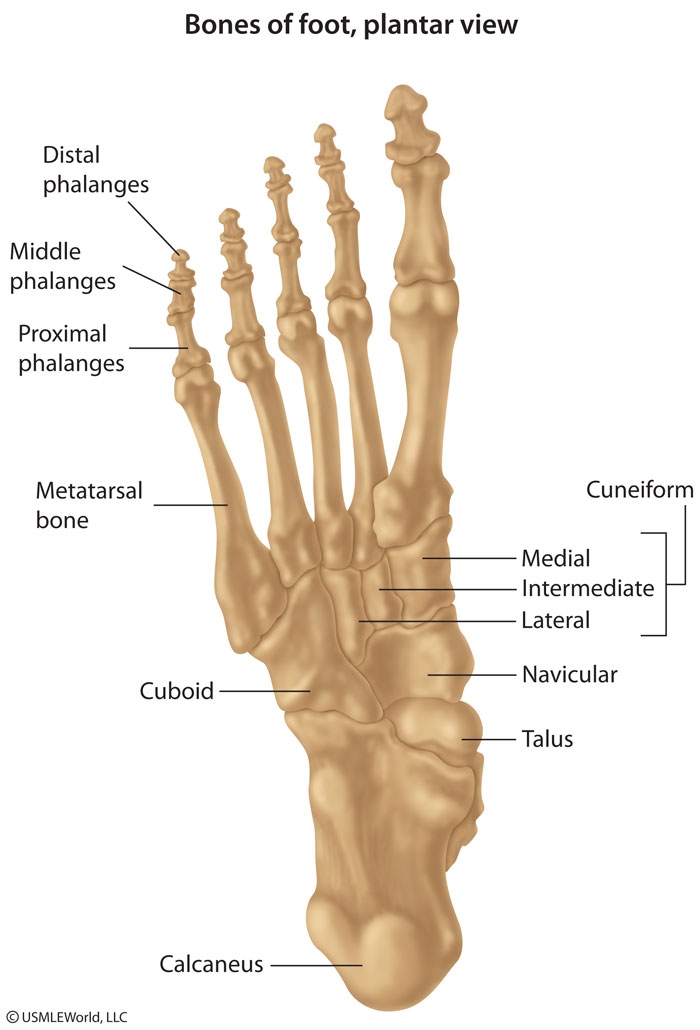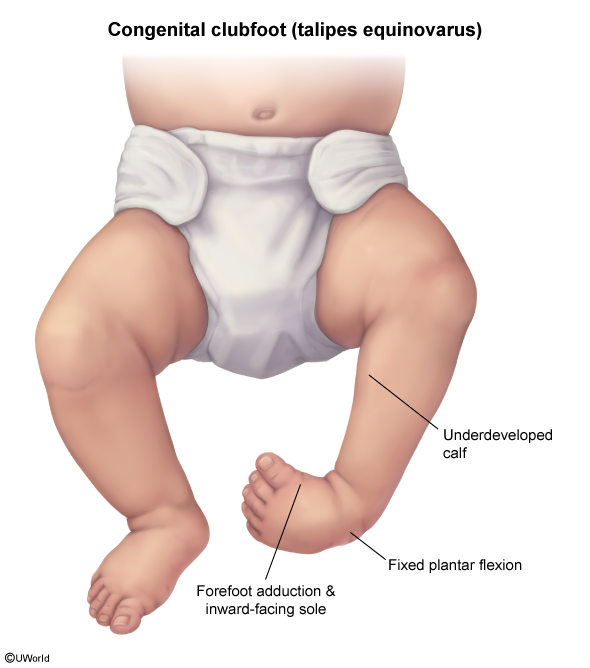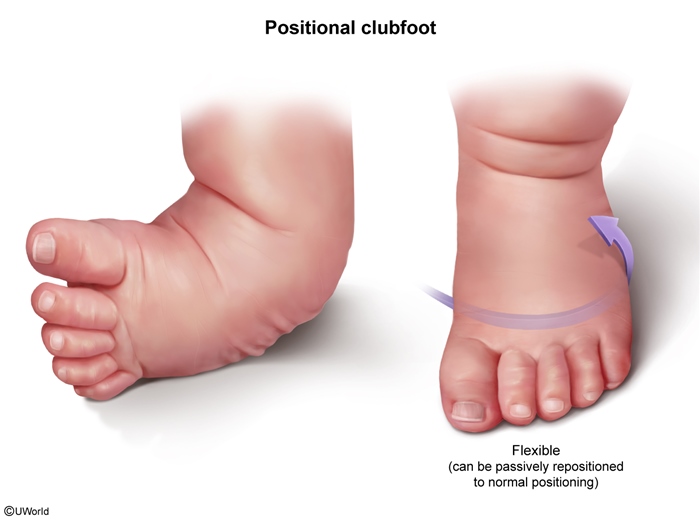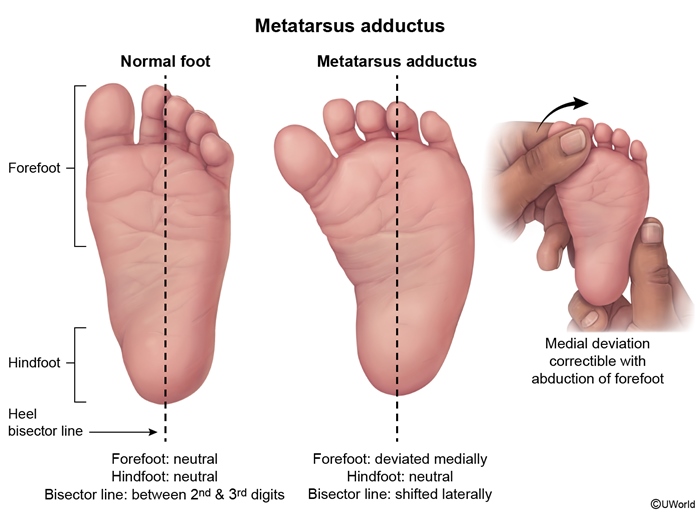Congenital Clubfoot (Congenital Talipes Equinovarus)
Article Sections
Introduction
Congenital clubfoot, or congenital talipes equinovarus, is characterized by a fixed, plantar-flexed, adducted, and inverted foot. If untreated, congenital clubfoot can result in severe deformity and functional impairment. It should be differentiated from positional clubfoot, a common newborn condition that appears similar to congenital clubfoot but in which the foot can be passively manipulated into a neutral position.
Pathogenesis
Congenital clubfoot is an idiopathic condition characterized by abnormally shaped and positioned tarsal bones (eg, talus, calcaneus). In a developing fetus with congenital clubfoot, the tissues surrounding the tarsal bones are underdeveloped, and the muscles are shortened and contracted. The talus is displaced medially, and the calcaneus is in a varus position under the talus (Figure 1). This leads to a plantar-flexed foot with an adducted and internally rotated forefoot, resembling the shape of a golf club.
Continue Learning with UWorld
Get the full Congenital Clubfoot (Congenital Talipes Equinovarus) article plus rich visuals, real-world cases, and in-depth insights from medical experts, all available through the UWorld Medical Library.
Figures



